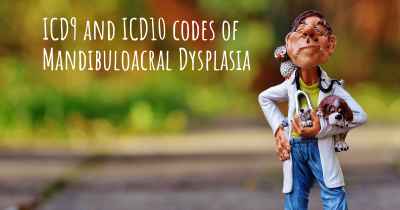What is the history of Mandibuloacral Dysplasia?
When was Mandibuloacral Dysplasia discovered? What is the story of this discovery? Was it coincidence or not?

Mandibuloacral Dysplasia (MAD) is a rare genetic disorder that affects various parts of the body, including the bones, skin, and fat tissue. It is characterized by distinctive facial features, skeletal abnormalities, and skin changes. MAD is an autosomal recessive disorder, meaning that both parents must carry a mutated gene for their child to be affected.
The history of Mandibuloacral Dysplasia dates back to the early 20th century when the first cases were reported. However, it wasn't until the late 1990s that significant progress was made in understanding the genetic basis of the disorder.
In 1999, a team of researchers led by Dr. Eric Schirmer identified the gene responsible for MAD, known as LMNA (Lamin A/C). This gene provides instructions for producing proteins that are essential for maintaining the structure and function of the cell nucleus. Mutations in the LMNA gene disrupt the normal production of these proteins, leading to the characteristic features of MAD.
Since the discovery of the LMNA gene mutation, numerous studies have been conducted to better understand the underlying mechanisms of Mandibuloacral Dysplasia. Researchers have identified several different mutations in the LMNA gene that can cause the disorder, each resulting in a slightly different clinical presentation.
MAD is a multisystem disorder that affects various tissues and organs in the body. The most prominent features of the condition include:
- Facial abnormalities: Individuals with MAD often have a small jaw (micrognathia), a thin nose, and a prominent forehead.
- Skeletal abnormalities: These may include short stature, joint stiffness, and abnormalities of the bones in the hands and feet.
- Skin changes: MAD is associated with thin, wrinkled skin, particularly on the hands and feet. Some individuals may also develop abnormal pigmentation and loss of fat tissue beneath the skin.
Additionally, individuals with MAD may experience other health issues such as heart problems, diabetes, and lipodystrophy (abnormal fat distribution).
Although there is currently no cure for Mandibuloacral Dysplasia, treatment focuses on managing the symptoms and improving the quality of life for affected individuals. This may involve a multidisciplinary approach, including regular monitoring of cardiac function, physical therapy to address skeletal abnormalities, and dermatological care to manage skin changes.
Research into MAD continues to advance our understanding of the disorder and may eventually lead to potential therapeutic interventions. Genetic counseling is also an important aspect of managing MAD, as it can help individuals and families understand the inheritance pattern and make informed decisions about family planning.
In conclusion, Mandibuloacral Dysplasia is a rare genetic disorder characterized by facial abnormalities, skeletal abnormalities, and skin changes. The discovery of the LMNA gene mutation in the late 1990s was a significant milestone in understanding the genetic basis of MAD. Ongoing research and medical advancements offer hope for improved management and potential future treatments for individuals affected by this condition.








